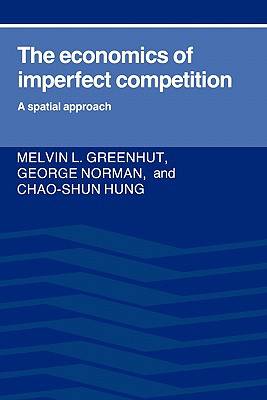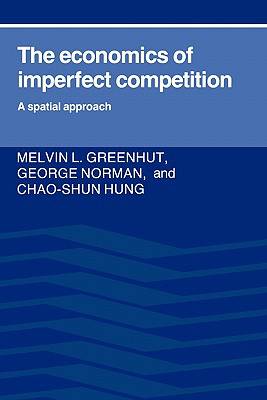
Door een staking bij bpost kan je online bestelling op dit moment iets langer onderweg zijn dan voorzien. Dringend iets nodig? Onze winkels ontvangen jou met open armen!
- Afhalen na 1 uur in een winkel met voorraad
- Gratis thuislevering in België vanaf € 30
- Ruim aanbod met 7 miljoen producten
Door een staking bij bpost kan je online bestelling op dit moment iets langer onderweg zijn dan voorzien. Dringend iets nodig? Onze winkels ontvangen jou met open armen!
- Afhalen na 1 uur in een winkel met voorraad
- Gratis thuislevering in België vanaf € 30
- Ruim aanbod met 7 miljoen producten
Zoeken
The Economics of Imperfect Competition
A Spatial Approach
Melvin L Greenhut, George Norman, Chao-Shun Hung
Paperback | Engels
€ 67,95
+ 135 punten
Uitvoering
Omschrijving
This book takes a different approach to traditional price theory and to the analysis of imperfect competition. It represented a breakthrough in the development of a 'new' microeconomic theory. Increasingly, it has been recognized that the perfectly competitive paradigm is inappropriate to the explanation of pricing behaviour in many 'real life' markets characterized by a significant separation between producers and consumers. The spatial perspective adopted by the authors provides a natural separation of markets, but provides as well a powerful analogy for apparently nonspatial issues such as product differentiation, pricing over time, problems of storage and transportation, and the economics of intraindustry trade and of the multinational enterprise. A major concern of The Economics of Imperfect Competition: A Spatial Approach is to make these analogies explicit by applying this spatial analysis to a wide variety of nonspatial problems.
Specificaties
Betrokkenen
- Auteur(s):
- Uitgeverij:
Inhoud
- Aantal bladzijden:
- 432
- Taal:
- Engels
Eigenschappen
- Productcode (EAN):
- 9780521315647
- Verschijningsdatum:
- 30/01/1987
- Uitvoering:
- Paperback
- Formaat:
- Trade paperback (VS)
- Afmetingen:
- 150 mm x 226 mm
- Gewicht:
- 566 g

Alleen bij Standaard Boekhandel
+ 135 punten op je klantenkaart van Standaard Boekhandel
Beoordelingen
We publiceren alleen reviews die voldoen aan de voorwaarden voor reviews. Bekijk onze voorwaarden voor reviews.











